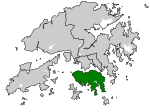Tung Lin Kok Yuen

Tung Lin Kok Yuen is a Buddhist nunnery and educational institution located at No.15 Shan Kwong Road in Happy Valley, Hong Kong. Founded in 1935 by Lady Clara Ho-Tung, it is home to approximately 30 nuns and 50 lay devotees.It is the only seminary for Buddhist nuns in Hong Kong and provides an 8-year curricular programme in Mahayana Buddhism. It contains both a primary day and primary night school, the Po Kok Vocational Middle School, and a separate branch of primary schools in the New Territories. In all institutions a study of Buddhist Sutras is given, but other subjects, depending on the location, include Mathematics, English, Chinese and History. All said institutions are female-only, and the total enrolment is 1,256.A large draw to Tung Lin is its two halls housing memorial tablets for the deceased. Each Remembrance Day, Tung Lin hosts a public service for the souls of the dead there. Similarly, there have been famous courses offered several times a year at the seminary, taught by authorities from the Sangha. These courses last several weeks each session. Both events are sponsored by the Hong Kong Buddhist Association.
Excerpt from the Wikipedia article Tung Lin Kok Yuen (License: CC BY-SA 3.0, Authors, Images).Tung Lin Kok Yuen
Shan Kwong Road, Hong Kong Island Happy Valley (Wan Chai District)
Geographical coordinates (GPS) Address Website Nearby Places Show on map
Geographical coordinates (GPS)
| Latitude | Longitude |
|---|---|
| N 22.266941 ° | E 114.185613 ° |
Address
東蓮覺苑 Tung Lin Kok Yuen
Shan Kwong Road
Hong Kong Island, Happy Valley (Wan Chai District)
Hong Kong, China
Open on Google Maps











